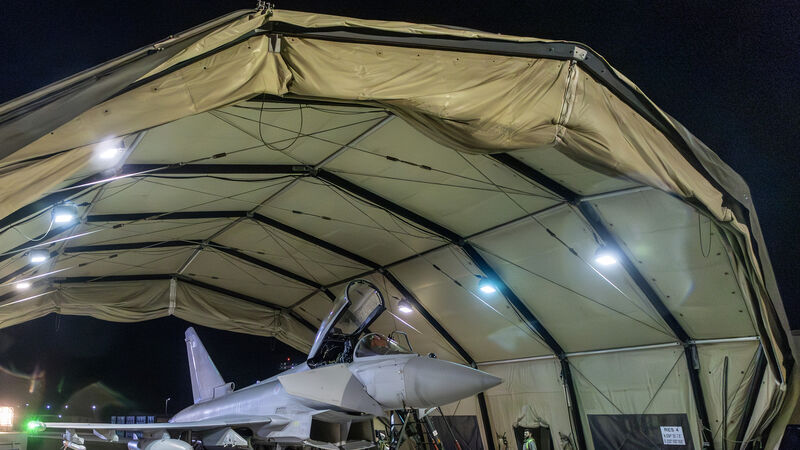John Whelan: Escalating Red Sea chaos set to hit consumers

One of four RAF Typhoon aircraft returning to RAF Akrotiri in Cyprus after joining the US-led coalition conducting air strikes against military targets in Yemen.
Try from €1.50 / week
SUBSCRIBEThe escalation of US and UK military strikes against the Houthi rebels in the Red Sea in the past week will most likely have the effect of escalating this important global shipping route to war zone status, scuppering any diplomatic channels to prevent closure of one of the world’s most important shipping routes.
Over the past few weeks, the Houthi drone and missile attacks on shipping vessels have pushed many shipping lines to use a safer route. Last week’s missile attacks by UK and US troops directly at Yemeni stronghold targets, which immediately provoked the promised retaliation by the Houthi rebels, will have convinced any remaining ship owners that the route is too dangerous for commercial vessels to sail through.
Already a subscriber? Sign in
You have reached your article limit.
Annual €130 €80
Best value
Monthly €12€6 / month
Introductory offers for new customers. Annual billed once for first year. Renews at €130. Monthly initial discount (first 3 months) billed monthly, then €12 a month. Ts&Cs apply.
CONNECT WITH US TODAY
Be the first to know the latest news and updates
Newsletter
News and analysis on business, money and jobs from Munster and beyond by our expert team of business writers.
Newsletter
News and analysis on business, money and jobs from Munster and beyond by our expert team of business writers.
Newsletter
Keep up with stories of the day with our lunchtime news wrap and important breaking news alerts.
Newsletter
Sign up to the best reads of the week from irishexaminer.com selected just for you.
Thursday, December 4, 2025 - 5:00 PM
Friday, December 5, 2025 - 8:00 AM
Thursday, December 4, 2025 - 8:00 PM
© Examiner Echo Group Limited